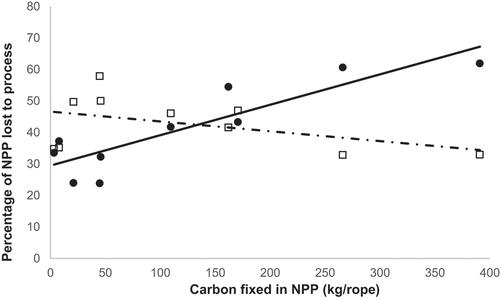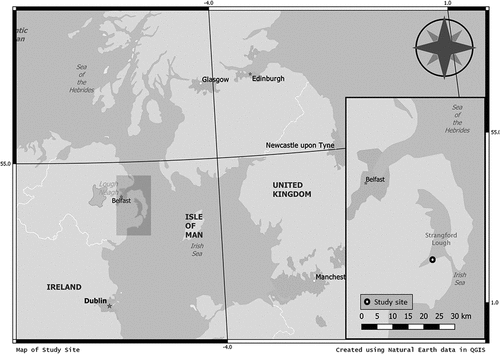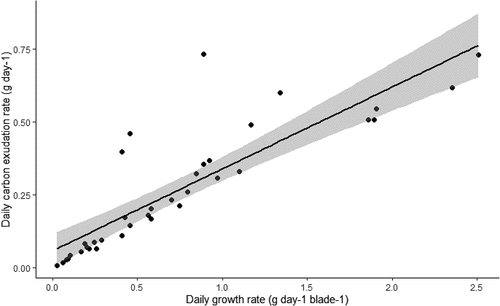Figures & data
Figure 2. Mean biomass accrual (±S.E.) (n = 5–15) of individual sporophytes of Saccharina latissima (g wet biomass day−1). Cultivation period 1, January 2016–June 2016: ●. Cultivation period 2, October 2016–September 2017: ▲, Locally weighted smoothing line applied shows the local mean.
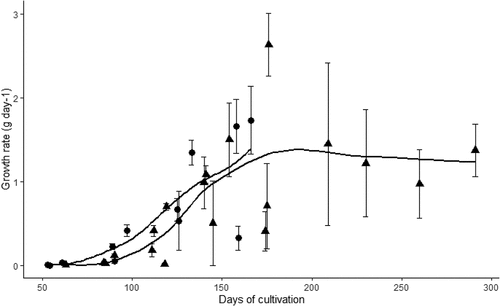
Figure 3. Relationship between the wet biomass and maximum length of sporophytes of Saccharina latissima (n = 231) from all individuals sampled across both cultivation periods.
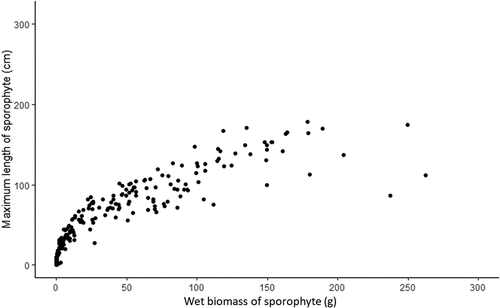
Figure 4. Mean (± S.E.) number of individuals of Saccharina latissima per 30 cm of mariculture rope (n = 5–15). Cultivation period 1, January 2016–June 2016: ●. Cultivation period 2, October 2016–September 2017: ▲, Locally weighted smoothing line shows the local mean ± 1.96 S.D.
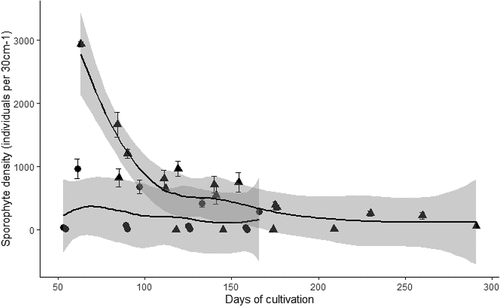
Figure 5. a) Median (± IQ range) mass of carbon lost through blade fall-off and exudation, and b) erosion per longline sampled across both trials (n = 10). c) Median (± IQ range) mass of carbon fixed in biomass and d) harvested per longline sampled across both trials (n = 10).
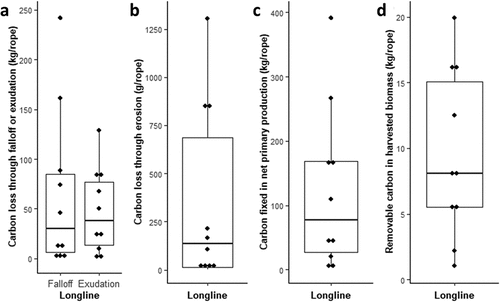
Figure 6. Mean percentage of net primary productivity (NPP) lost through either blade fall-off or exudation per longline sampled across both trials (n = 10) versus mean NPP per longline across both trials. Exudation: □. Fall-off: ●.
